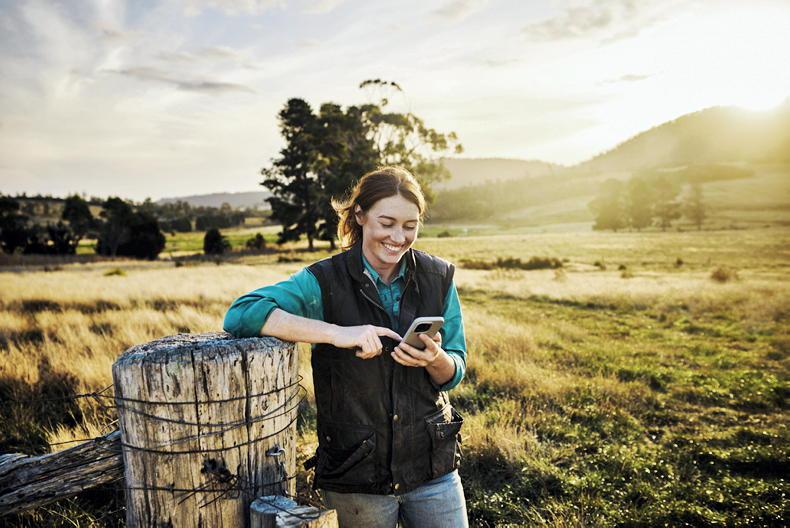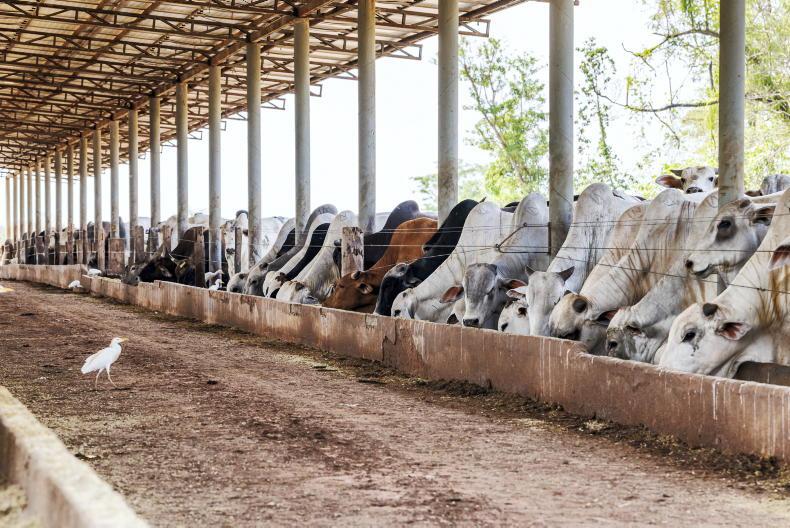Two punnets of strawberries sit side by side in the supermarket fridge. Both are red, plump and delicious but look closer and one is from Wexford while the other has travelled from Spain. We know it is a better environmental choice to purchase a product that has travelled across a county border rather than a country border but as consumers, we deserve more information.
Food labelling is constantly evolving and next step is in the area of carbon labelling. So what exactly is it? Carbon labelling summarises the greenhouse gases emitted from a product or service. It includes the production, distribution and carbon footprint to allow us as consumers to make more informed choices
Carbon labelling is appearing more on retail products, albeit slowly – slower than is definitely needed. And the pressure is on to meet our national target of a 51% reduction in greenhouse gas emissions by 2030.
Reporting on carbon
Currently, there is no obligation for products to display carbon labelling. You may see it when a business is ticking all the boxes and wants you to be aware of their efforts.
However, regulation is on the horizon and it will become compulsory so we can expect to see it on all products in the near future.
Bord Bia’s consumer research and market insight centre, The Thinking House, released a carbon report earlier this year entitled The Consumer & Carbon: Cutting Through the Carbon Jargon. The aim of the report was to bring some clarity to the consumers’ view of the current and future path of carbon messaging. The report shows that there is much work to be done to bring consumers closer to understanding carbon communication and labelling.
Trends
Trends and Insights Specialist with Bord Bia, Grace Binchy, says, “The main message from the report is that consumers need a lot of help to understand the language that we’re using, when we talk about the world of carbon net zero, carbon positive, carbon neutral, providing consumers with scores, and all of that merging on a packet.
“Furthermore, its not just the label. There is a lot of communications (for example, advertising) out there that is confusing. The language businesses use to communicate their mission, or their carbon goals, is not effective.
“Businesses shouldn’t assume the consumer understands exactly what they’re saying. People understand food waste, for example, because they have to deal with it themselves at home, but carbon is something that’s less tangible. The analogy I often use is that energy and wind farms were not something people were very comfortable with for a long time, but that has changed more recently, particularly as we’ve had the challenges around the energy crisis.”
However, Grace went on to say that the report did find that consumers do regard carbon as important. “Interestingly, 51% of people say it [carbon] is personally important to them; 53% say there’s too many different messages relating to carbon footprint and emissions; yet 52% have no idea what their carbon footprint should be.”
“You might hear some ads on the radio, or read something in the newspaper or online, which says, ‘we can help you reduce your carbon footprint’, but actually having a benchmark as to what a good carbon footprint looks like in the first place is important.”
What is a product’s carbon footprint?
The carbon footprint of a product, in terms of its complete life cycle, measures the total greenhouse gas emissions from extraction of the raw material to end of life. Similar to a nutritional label on a food product, a carbon label helps us to understand the impact of the product we are purchasing or consuming.
So when you are standing in the supermarket, what are you looking for? The problem at the moment is there are multiple labels. Some state the carbon footprint of the product (e.g. 1.18 kg CO2); the lower the number, the better. There is also a graded label, which could take the form of a letter, colour or wording grade, for example, A/B/C, green, yellow, orange and red, or low, medium and high. There are also stamp of approval labels, which indicate if the products meets a threshold for being low carbon.
Basically, there is a wide variety of often competing industry marks in the marketplace, ranging from singular CO2 focus through to multi-issue ‘blends’ – how are consumers expected to understand carbon labels if there isn’t consistency among them?
A common label
However, consumers can expect clarity in the near future. According to the Bord Bia report, by the end of 2024, the EU will set out its proposal for a common label.
Caroline Whyte, a writer and editor for the Foundation for the Economics of Sustainability (FEASTA), based in Belgium says, “If we’re going to have some kind of labelling like eco labelling, it needs to be something that’s broadly applied, and that way you don’t have all of these different labels popping up and you don’t know what to believe. The labelling needs to be something that’s very transparent, where it’s clear how it’s being measured, and so on.”
While we wait for transparency and consistency, in the meantime, keep your eyes open for labelling and ask questions for more clarity.
• Graded: This label includes some form of grade such as A, B, or C, or low, medium, high.
• Footprint: This label includes the numerical footprint value of the product, e.g. 1.5kg CO2.
• Footprint with details: This
includes the numerical footprint value of the product with the breakdown of the footprint in the lifecycle (materials, production, transport, packaging, use, end of life, etc).

Carbon label examples.
Read more
Bacon rolls and croissants at COP26
Consumer: smart shopper
Two punnets of strawberries sit side by side in the supermarket fridge. Both are red, plump and delicious but look closer and one is from Wexford while the other has travelled from Spain. We know it is a better environmental choice to purchase a product that has travelled across a county border rather than a country border but as consumers, we deserve more information.
Food labelling is constantly evolving and next step is in the area of carbon labelling. So what exactly is it? Carbon labelling summarises the greenhouse gases emitted from a product or service. It includes the production, distribution and carbon footprint to allow us as consumers to make more informed choices
Carbon labelling is appearing more on retail products, albeit slowly – slower than is definitely needed. And the pressure is on to meet our national target of a 51% reduction in greenhouse gas emissions by 2030.
Reporting on carbon
Currently, there is no obligation for products to display carbon labelling. You may see it when a business is ticking all the boxes and wants you to be aware of their efforts.
However, regulation is on the horizon and it will become compulsory so we can expect to see it on all products in the near future.
Bord Bia’s consumer research and market insight centre, The Thinking House, released a carbon report earlier this year entitled The Consumer & Carbon: Cutting Through the Carbon Jargon. The aim of the report was to bring some clarity to the consumers’ view of the current and future path of carbon messaging. The report shows that there is much work to be done to bring consumers closer to understanding carbon communication and labelling.
Trends
Trends and Insights Specialist with Bord Bia, Grace Binchy, says, “The main message from the report is that consumers need a lot of help to understand the language that we’re using, when we talk about the world of carbon net zero, carbon positive, carbon neutral, providing consumers with scores, and all of that merging on a packet.
“Furthermore, its not just the label. There is a lot of communications (for example, advertising) out there that is confusing. The language businesses use to communicate their mission, or their carbon goals, is not effective.
“Businesses shouldn’t assume the consumer understands exactly what they’re saying. People understand food waste, for example, because they have to deal with it themselves at home, but carbon is something that’s less tangible. The analogy I often use is that energy and wind farms were not something people were very comfortable with for a long time, but that has changed more recently, particularly as we’ve had the challenges around the energy crisis.”
However, Grace went on to say that the report did find that consumers do regard carbon as important. “Interestingly, 51% of people say it [carbon] is personally important to them; 53% say there’s too many different messages relating to carbon footprint and emissions; yet 52% have no idea what their carbon footprint should be.”
“You might hear some ads on the radio, or read something in the newspaper or online, which says, ‘we can help you reduce your carbon footprint’, but actually having a benchmark as to what a good carbon footprint looks like in the first place is important.”
What is a product’s carbon footprint?
The carbon footprint of a product, in terms of its complete life cycle, measures the total greenhouse gas emissions from extraction of the raw material to end of life. Similar to a nutritional label on a food product, a carbon label helps us to understand the impact of the product we are purchasing or consuming.
So when you are standing in the supermarket, what are you looking for? The problem at the moment is there are multiple labels. Some state the carbon footprint of the product (e.g. 1.18 kg CO2); the lower the number, the better. There is also a graded label, which could take the form of a letter, colour or wording grade, for example, A/B/C, green, yellow, orange and red, or low, medium and high. There are also stamp of approval labels, which indicate if the products meets a threshold for being low carbon.
Basically, there is a wide variety of often competing industry marks in the marketplace, ranging from singular CO2 focus through to multi-issue ‘blends’ – how are consumers expected to understand carbon labels if there isn’t consistency among them?
A common label
However, consumers can expect clarity in the near future. According to the Bord Bia report, by the end of 2024, the EU will set out its proposal for a common label.
Caroline Whyte, a writer and editor for the Foundation for the Economics of Sustainability (FEASTA), based in Belgium says, “If we’re going to have some kind of labelling like eco labelling, it needs to be something that’s broadly applied, and that way you don’t have all of these different labels popping up and you don’t know what to believe. The labelling needs to be something that’s very transparent, where it’s clear how it’s being measured, and so on.”
While we wait for transparency and consistency, in the meantime, keep your eyes open for labelling and ask questions for more clarity.
• Graded: This label includes some form of grade such as A, B, or C, or low, medium, high.
• Footprint: This label includes the numerical footprint value of the product, e.g. 1.5kg CO2.
• Footprint with details: This
includes the numerical footprint value of the product with the breakdown of the footprint in the lifecycle (materials, production, transport, packaging, use, end of life, etc).

Carbon label examples.
Read more
Bacon rolls and croissants at COP26
Consumer: smart shopper










SHARING OPTIONS